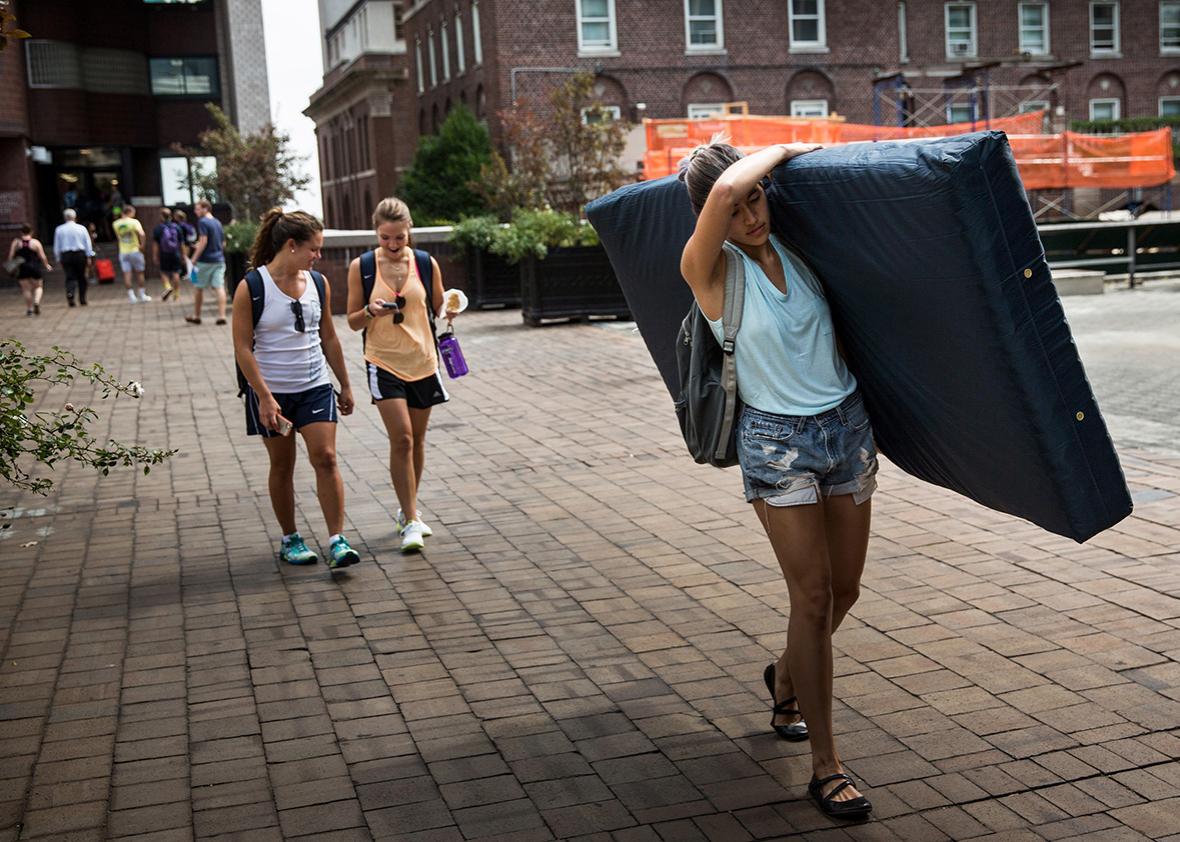This post originally appeared on Inside Higher Ed.
For years, advocates pressing colleges to do more to prevent campus sexual assault—including the White House—have cited a 2007 statistic that claims 1 in 5 female students experiences a sexual assault in college. That statistic, based on a survey of only two colleges, has been questioned for as long as it has been cited, with a particularly strong backlash emerging in the last year.
But, by broadly defining sexual assault in a way similar to the 2007 study, a number of surveys at individual campuses in recent months have started to reach the same conclusion. The most recent research to bolster the statistic comes from Rutgers University, which was asked by the White House Task Force to Protect Students from Sexual Assault to pilot a climate survey developed by the U.S. Department of Justice.
The university announced the results of the survey Wednesday and provided a list of recommendations to the White House about how to better implement it.
The survey found that 1 in 5 female students at Rutgers has experienced “unwanted sexual contact” since arriving on campus. In May the University of Michigan reached roughly the same conclusion with its survey. At both universities—just as in the 2007 study—the surveys used a broad definition of sexual assault that included not only incidents involving rape but also unwanted kissing and touching.
When surveys at the University of Kentucky and the Harvard School of Public Health used a narrower definition limited to unwanted or forced penetration, the rate of assault was far lower.
At Kentucky, 5 percent of both male and female students said they had been assaulted. At Rutgers and Michigan, where broader definitions were used, about 12 percent of both male and female students said they had experienced an assault. At Michigan, 22 percent of female students said they had been assaulted in the last year. Kentucky has not yet released a breakdown of its numbers by gender.
Settling on one definition for use in climate surveys will be a crucial step in understanding the prevalence of campus sexual assault, said Sarah McMahon, associate director of the Rutgers Center on Violence Against Women and Children and the lead researcher on the survey.
“We think the 1-in-5 statistic is important,” McMahon said. “We know sexual violence means different things to different individuals, so we used a broad definition. We know all forms of sexual violence are problematic and have serious repercussions.”
In their recommendations to the White House regarding the pilot survey, McMahon and her team stopped short of suggesting that all colleges use the broader definition, however, noting that the phrase unwanted sexual contact made it “nearly impossible” for researchers to distinguish among types of sexual violence that differ in severity. “Our recommendation does suggest that we need to have more discussion about how to define and measure sexual violence so that we can compare institutions,” McMahon added.
Discussing the 1-in-5 statistic last year, Laura Dunn, executive director of sexual assault prevention group SurvJustice, said the fact that some still balk at the idea of unwanted kissing being considered sexual assault is a result of the criminal justice system frequently focusing on only the worst kinds of sexual violence. It has caused a particular image of sexual assault to form in people’s heads, she said, and it’s an image that ignores the existence of a much broader expanse of offenses.
“People who deny this issue don’t believe something like an unwanted kiss is harmful, but it is,” Dunn said. “I think there’s an idea in our society that says if a man’s not using a gun or beating a woman, then it’s OK to be pushy and aggressive, or to wait until she’s drunk. We really think of some sexual aggression as really not that bad, and that mentality extends to the survivors as well.”
The Rutgers study—which included survey responses from about 11,000 students and details from 21 focus groups featuring about 200 students—also expanded its victimization questions to ask if students had been assaulted prior to coming to the university. Those findings support yet another oft-discussed statistic: that at least 1 in 4 college women has been sexually assaulted at any point in her life.
Nearly 25 percent of female students reported that they had been sexually assaulted before enrolling at Rutgers. “That’s making a difference in the references we share at new-student orientation and throughout our first-year experience programming,” said Felicia McGinty, vice chancellor for student affairs at Rutgers. “It’s an awful epidemic that often begins long before a student steps foot on campus. We’ll be modifying some of our efforts based on that awareness.”
In response to the survey, Rutgers is modifying much more than that. The university has rewritten its sexual assault policies to include an affirmative-consent definition. It has launched an awareness campaign called “The Revolution Starts Here: End Sexual Violence Now” and has created prevention programming aimed at male students.
A new website will serve as a “one-stop shop” for information and resources about campus sexual assault and include the results of the climate survey. Student affairs staff members will receive updated training, and counseling center staff members will learn about post-traumatic stress disorder and how it pertains to sexual assault victims.
A yearlong schedule of events about bystander intervention is also being planned for students. While only 7 percent of undergraduate women reported their assaults to university officials, more than three-quarters said they had told friends. This, McMahon said, could mean that “peers have an important role to play” in prevention efforts.
The steps amount to what the university is calling its “action plan,” and one of the university’s main suggestions to the White House task force is to remind institutions that climate surveys are pointless if they don’t lead to changes on campus. “Information must lead to action,” McMahon said. “Survey tools alone are not enough.”
